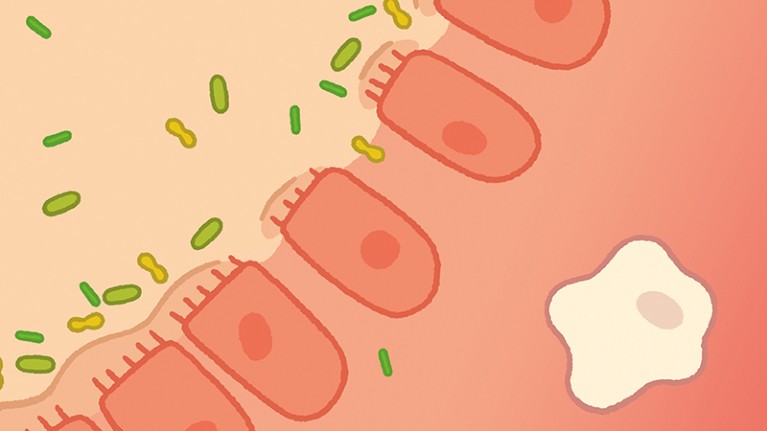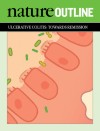
Credit: Iris Abols
The initial manifestations of ulcerative colitis, although unpleasant and discomforting, are not necessarily alarming. Stomach cramps, diarrhoea and even rectal bleeding can arise from various problems of the gastrointestinal system. But if such symptoms persist or worsen, they could represent the first skirmishes in a lifelong battle with this common form of inflammatory bowel disease (IBD).
The underlying causes of ulcerative colitis are murky and complicated. Genetic factors certainly play a part: 8–14% of people with the condition have a family history of IBD. But myriad environmental factors, including diet and lifestyle, as well as a person’s psychological wellbeing, also make a considerable contribution. The influence of external factors — and their interplay with genetics — can be seen in studies of migrant families. Several such investigations have shown an increased risk of ulcerative colitis in the descendants of people who have moved from parts of the world with a low incidence of ulcerative colitis to areas with a higher incidence. Furthermore, although IBD has been most prevalent historically in Western nations, its incidence is now rising in countries in Asia and Latin America too.
Although the triggers for ulcerative colitis continue to elude researchers, the condition is thought to be the product of disruption to the microbial ecosystem of the colon, or large intestine. The wall of the innermost layer of the intestine, known as the mucosa, comprises a tightly sealed layer of epithelial cells. Interactions between this barrier and members of the diverse community of commensal microorganisms in the lumen of the gut help to maintain a healthy digestive tract, as well as to regulate the activity of immune cells that reside beneath the intestinal epithelium, in a layer of the mucosa called the lamina propria.
Factors that contribute to the emergence of ulcerative colitis can disturb the colon’s microbial ecosystem in various ways, including by disrupting the epithelial barrier. This allows gut microorganisms to interact with immune cells, which provokes an inflammatory response that spirals out of control. Damage to the mucosa is exacerbated and often spreads to other parts of the colon.
There is no cure for ulcerative colitis. Instead, people with the condition turn to anti-inflammatory drugs to manage mild symptoms, or to potent steroids or immunomodulatory drugs to control more severe ones. However, many people do not obtain lasting relief. And around 15% of people with ulcerative colitis find that within 20 years of their diagnosis they are left with no option but to have a large section — or even all — of their colon removed surgically.
Fortunately, the development of a host of fresh treatment approaches is advancing, with some already entering the clinic, and others showing promise in clinical or preclinical trials. Most exploit features of ulcerative colitis that are distinct from those targeted by the existing armamentarium. For example, some potential drugs are designed to impede the migration of immune cells to affected sites in the colon, to help break the cycle of inflammation. Others aim to promote accelerated repair of the epithelial barrier. And researchers are even exploring whether it is possible to control ulcerative colitis by supplementing the disrupted gut ecosystem with microorganisms harvested from healthy donors.
With a broader range of defensive tactics to choose from, clinicians could soon be better able to help those with ulcerative colitis achieve a durable victory against this debilitating condition.Nature is pleased to acknowledge the financial support of the Translational Research Center for Medical Innovation (TRI) and Himuka AM Pharma Corp. As always, Nature retains sole responsibility for all editorial content.

 Nature Outline: Ulcerative colitis
Nature Outline: Ulcerative colitis
 Gut reaction
Gut reaction






